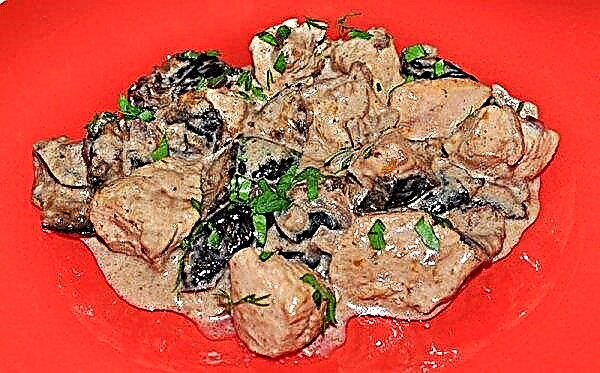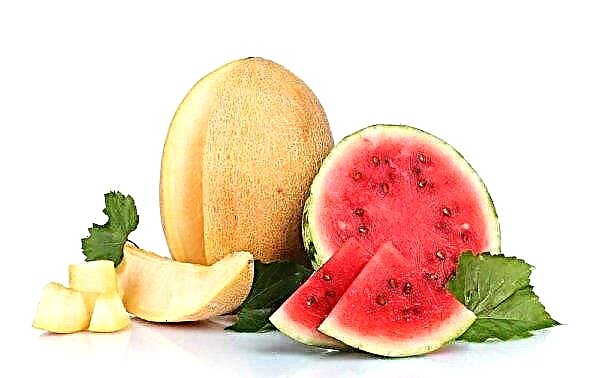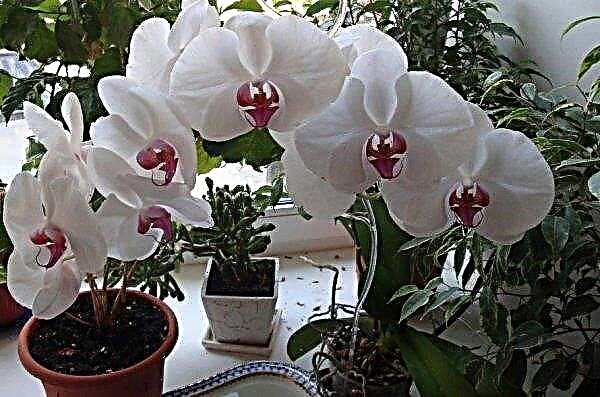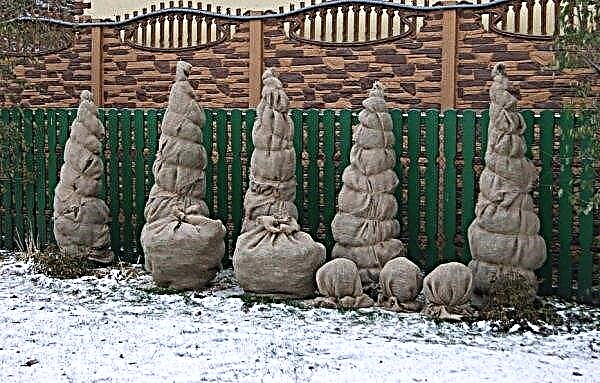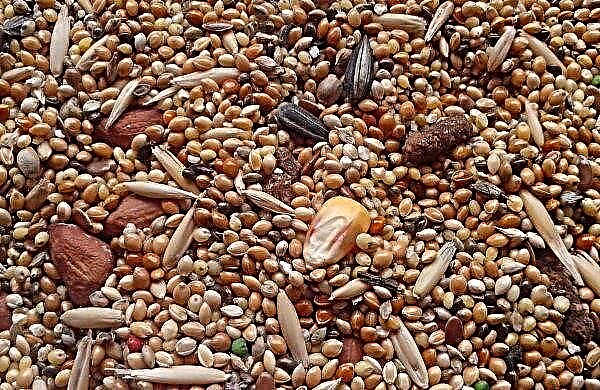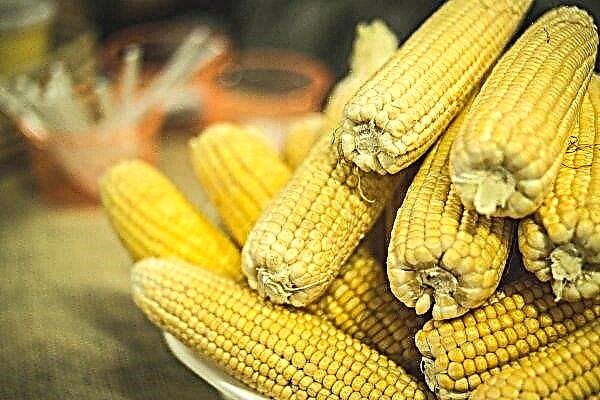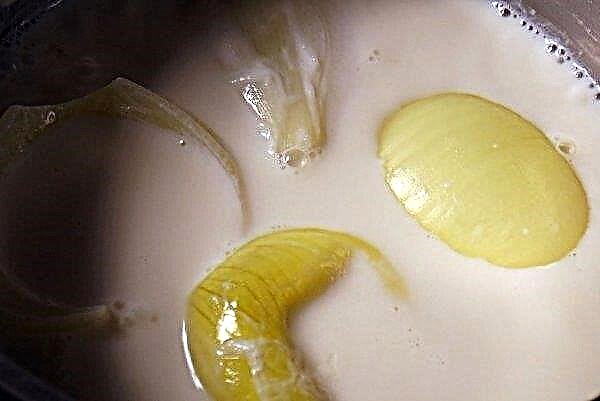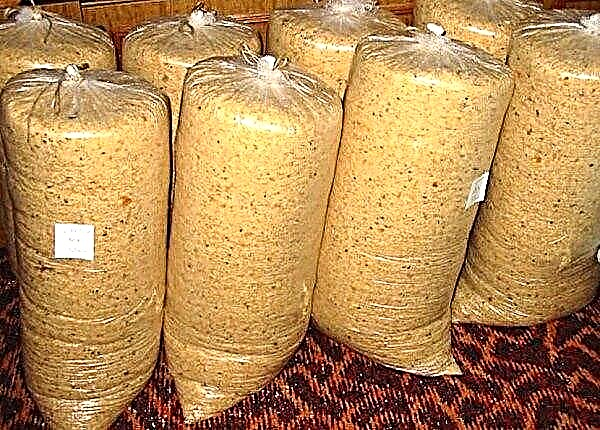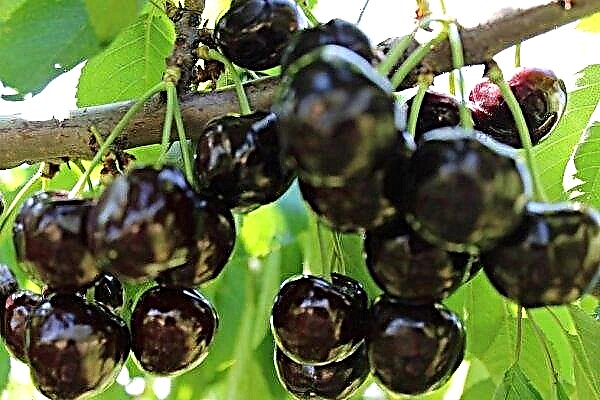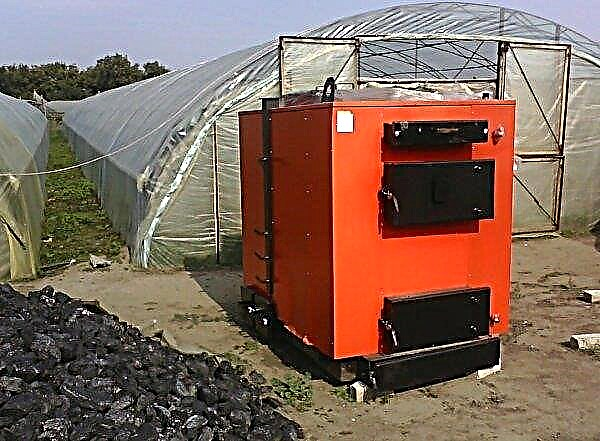Fluffy evergreen juniper is one of the favorite plants of both professional landscape designers and amateur gardeners. Unlike its cypress relative, this plant is not so demanding on environmental conditions and is hardy enough that it can be grown even in the Urals and in Siberian regions. In Bashkiria, Chelyabinsk and Sverdlovsk regions, you can find juniper shrubs in the forests, where it grows in quiet glades well-lit by the sun.
Where and how juniper grows
Juniper is a representative of conifers of the Cypress family. 75 species with various characteristics belong to this genus, ranging from low sprawling bushes, about 2 meters in diameter, to tall slender trees, which in natural conditions can grow up to 12 m.
Did you know? In the old days, it was believed that a juniper branch, fixed above the entrance to the house, would protect from the evil eye, damage and ill-wishers, and a wreath woven from its branches would attract health and good fortune to the home.
Juniper - a dioecious plant; there are male and female individuals. Fruits ripening on female plants are widely used as food by residents of the Ural regions and Siberia. Juniper cones ripen for almost 2 years, and are considered suitable for consumption when their color reaches a black and blue hue with a bluish coating.
Juniper can be found in almost all regions of Russia, from the hot south to the harsh northern regions. Due to the fact that the roots of the plant go deep into the soil and are able to get nutrients even with severe frosts, it tolerates severe cold winters and long southern drought.
In the Urals
This representative of cypress trees is in demand among owners of private houses and summer cottages in the Urals, and is also widely used in urban landscaping. Especially popular, due to its undemanding care, common juniper. It is known that the climate in the Ural region is quite severe, and the bright color of the evergreen juniper adds color to the winter landscape outside the window. In addition, this plant releases phytoncides, which have a beneficial effect on human well-being.
Often, ground cover varieties of juniper are planted between heat-loving plants. Evergreen bushes cover the soil and create a kind of "pillow" that retains heat and allows you to protect the root system of your neighbors from frost.
In Bashkiria
If in the Urals in the design of garden plots and city parks common juniper is common, then in Bashkiria, which is located a little south, sprawling shrubs feel good, and trees of this species.

So, one of the most popular varieties is Skyrocket. This juniper tree grows up to 10 m in height, and its crown diameter reaches 1 m. The plant has a bluish-colored crown, which is very well formed. The plant grows well on any soil other than clay soils, the only requirement is adequate lighting.
Important! In regions with heavy snowfalls, it is recommended to tie tall junipers to the support for the winter so that the crown does not fall apart under the weight of snow.
In the Sverdlovsk region
In the more northern Sverdlovsk region dwarf and ground cover species are popular. One of the most popular decorative varieties is Glauka. It has needles of a gentle bluish tint and grows in the form of a small bush, which can be given any shape to your taste. However, young bushes need shelter for the winter.
Juniper Arkady is often called a good winter-hardy variety suitable for cultivation in the conditions of the Sverdlovsk region.. This plant has an important quality - good gas tolerance, which allows it to be cultivated in industrial cities. The species is distinguished by a bright green tint of needles and grows up to half a meter in height.

Basic rules for planting and care
Juniper is easy enough to grow independently from a small seedling. Almost everyone can afford to buy a small plant, because its price is quite low. However, in order to get a high-quality and healthy adult specimen, it is necessary to follow the rules for planting and growing it.
When choosing a place for planting a shrub or tree, one should prefer a site well lit by the sun, without obvious drafts. In addition, it is necessary to take into account the future size of the plant in order to provide it with the necessary space for development.
Juniper soil prefers sandy or sandy loam, without close occurrence of groundwater. Landing is carried out after snow melts, in late April - early May. In contrast to the southern regions, where it is better to plant conifers in winter, this is not recommended in the Urals, since earlier frosts can kill an unrooted seedling.
The pit for planting juniper should be 2-3 times larger than the root ball of the plant, and its depth is needed so that the root neck protrudes 3-6 cm above the ground.
The landing pattern is as follows:
- The bottom of the dug hole is lined with a layer of drainage, consisting of broken brick, stone or expanded clay.
- The juniper is placed in a pit, covered with soil and rammed the ground tightly.
- The soil around the trunk is covered with a layer of peat mixed with cones and walnut husks. The thickness of the mulch layer is 10 cm.
- Abundantly water the seedling.

Diseases and Pests
Despite its endurance, juniper is susceptible to certain diseases, which primarily affects the appearance of the seedling. One of the most common diseases is fusarium infection, caused by a fungal infection.. Pathogens penetrate the roots of the plant and block its access to nutrients. Basically, this disease affects bushes and trees growing on loamy soils with excess moisture and lack of lighting.
Important! Like all conifers, juniper seedlings do not tolerate soil drying during the acclimatization period, so you should carefully monitor the soil moisture level, but at the same time do not flood the plants, since this can cause the multiplication of pathogens.
To avoid damage to the seedling by Fusarium infection, before planting it must be treated with special preparations based on copper - "Ridomil", "Acrobat", "Profit", as well as carefully observe the conditions of the plant.

Besides, a relative of cypress can be affected by the disease of drying out the shoots. Signs of this disease are characteristic rapid growths on the branches and rapid shedding of needles. When the first symptoms appear, the affected areas of the branches should be removed and the juniper treated with a solution of copper sulfate.

Another fungal disease affecting conifers is shute - a disease caused by a special kind of fungus. With this disease, the juniper branches turn yellow or brown, and the needles stick together with a grayish web. When the first signs of the disease appear, the affected shoots should be removed and the plant sprayed with Bordeaux liquid or with the “Quadris”, “Strobi”, “Ridomil Gold MC” preparations.
Did you know? During the Great Patriotic War, doctors of one of the Crimean hospitals, due to a lack of disinfectants, carried out a number of operations directly in the juniper grove, where the air is almost sterile. It is noteworthy that there were no postoperative complications.
In addition to pathogens, juniper can also be affected by pests. One of his most dangerous enemies is the brown moth - an inconspicuous-looking lilac-gray butterfly that lays caterpillars in the ground under the juniper. Both the butterfly and its larvae feed on needles, which can quickly destroy the juniper. If this insect appeared on the site, it is necessary to treat the seedlings with insecticides (Akarin, Zolon, Kinmiks, Bitoksibacillin, Decis, Lepidotsid).

Coniferous juniper is another parasite that loves conifers.. She eats juice from both needles and from the fruits of the plant. In appearance, the pest resembles small convex shells whose diameter does not exceed 2 mm. The insect sticks to the juniper and draws out all the useful substances from it, from which it begins to dry out. It is best to remove the scabbard mechanically, since its carapace is covered with a special wax film that protects against external factors. After this, you need to process the branches with systemic insecticides - "Aktara", "Confidor", "Angio", "Calypso".

No less than a scale shield, garden aphid is dangerous for fragrant bushes and trees. In appearance, this parasite is very tiny, brownish, gray or green. Aphids often settle in whole colonies, and the branches of the plant seem to be covered with an incomprehensible substance. There is only one way to deal with this pest - treating the seedling with preparations against garden parasites, such as Fufanon, Karbofos, Actellik, Bankol, Confidant.

Juniper is one of those plants that, despite its prevalence and popularity, is not boring to garden design lovers. Due to their unpretentiousness and decorativeness, these evergreen representatives of the cypress family will become a wonderful decoration of a garden, city flower bed or house adjoining territory and will delight the eye all year round even in cold areas.

